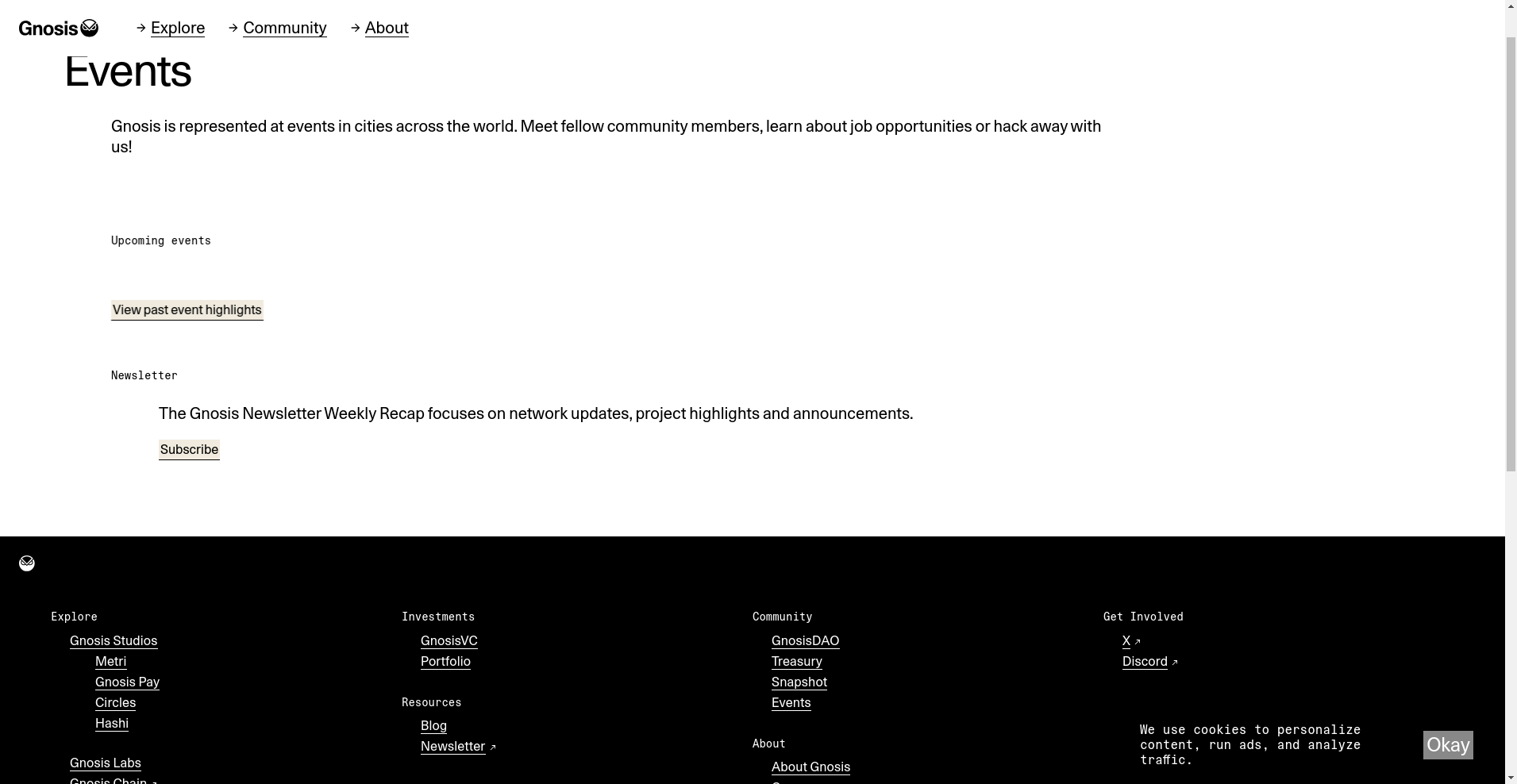Gnosis ($GNO) Review: A Data-Driven Legitimacy and Risk Assessment of the Leading DeFi Infrastructure

What Is Gnosis: An Introduction
Gnosis is a prominent project within the decentralized finance (DeFi) sector, primarily focused on building infrastructure and applications that foster an open, censorship-resistant internet. Established in 2015, Gnosis initially gained recognition through prediction markets, but has since evolved into a broader ecosystem that includes secure multi-signature wallets, decentralized exchanges, DAO tooling, and a standalone blockchain called Gnosis Chain.
This review aims to provide an impartial analysis of Gnosis’s current credibility, security, tokenomics, and long-term risks, supported by available audits, community activity, and technological foundations. The core product, Gnosis Safe ($GNO), offers industry-leading multi-sig custody solutions used globally, and the project’s infrastructure underpins the rapidly growing wave of decentralized applications.

The Team and Vision Behind Gnosis
Gnosis’s leadership includes a mix of public-facing founders and experienced blockchain developers. The team’s background encompasses early Ethereum development, decentralized system engineering, and enterprise cybersecurity. While specific founder identities are partly anonymized, the project maintains a highly transparent development process and community engagement, with active social channels, a reputable audit history, and a clear roadmap towards extensive decentralization and application scaling.
Key milestones from their roadmap include:
- 2018: Launch of Gnosis Chain (formerly xDai Chain), securing a multi-validated, stable Layer 1 network.
- 2020: Formation of GnosisDAO to transfer treasury control and enable community governance.
- 2021: Deployment of CoW Protocol and the Gnosis Safe multi-signature platform, securing billions in assets.
- 2023-2024: Introduction of Gnosis 3.0 and major upgrades like Chiado’s Pectra hardfork, expanding functionality and scalability.
Overall, the credibility of Gnosis’s leadership is reinforced by multiple third-party audits and the track record of delivering on technical milestones, though some elements remain community-driven and less anonymous.
Assessing the Security and Integrity of Gnosis
Our security analysis relies heavily on the audit report from Cer.live, the only major external security audit publicly available for Gnosis Safe contracts. The audit coverage stands at 80%, indicating active security testing but also room for further review.
Key points from the Cer.live audit include:
- Strengths: The core Gnosis Safe multisig contracts received a high score (above 80%) with no critical vulnerabilities reported. The audit confirmed that the implementations align well with industry standards for multisignature wallets and asset custody.
- Weaknesses: Minor issues related to administrative functions and configuration parameters were flagged but are not deemed exploitable in real-world scenarios, given proper operational controls. The audit signifies a mature security posture but underscores the importance of continuous testing.
- Incidents: The report notes that incidents have occurred historically, but no recent exploits or breaches are recorded since the contracts have been deployed and updated with audits and bug bounty programs.
From a trust standpoint, the combination of third-party audits from OpenZeppelin, Solidified, and G0 Group, along with the transparent bug bounty initiatives, suggest that Gnosis’s security model is solid but not invulnerable. The reliance on community and third-party audits is typical for high-value DeFi infrastructure, and overall, the security stance maintains industry standards.
Analyzing the Gnosis ($GNO) Tokenomics: Supply, Distribution, and Utility
The Gnosis token, $GNO, has a total fixed supply of 3,000,000 tokens, with circulating supply at approximately 2.59 million as of the latest data. The token plays central roles in governance, security (staking on Gnosis Chain), and ecosystem incentives.
Key tokenomics details include:
- Total Supply: 3,000,000 GNO.
- Circulating Supply: ~2,590,000 GNO.
- Market Cap: Approximately $288.5 million, with recent fluctuations, reflecting moderate valuation relative to the ecosystem size.
- Distribution:
- ,Community/DAO: A significant portion allocated to community governance and ecosystem grants.
- ,Team and Advisors: Token allocations vest over multiple years, with governance-approved vesting schedules to prevent sudden dumps.
- ,Venture Capital: Strategic investments may involve early tokens, with lock-ups to ensure stability.
- Utility: Governance voting, security staking, ecosystem incentives, and potential future applications in decentralized AI and prediction markets.
- Inflation/Deflation: No clear inflation schedule documented; primarily a fixed supply with ongoing utility expansion.
This economic design favors long-term stability if active governance and community participation are maintained. However, token concentration among early investors or large stakeholders could pose governance centralization risks.
Assessing Gnosis's Development and Ecosystem Activity
Data indicates active development and ecosystem expansion. The recent Chiado hardfork enhanced the Gnosis Chain, improving scalability and transaction efficiency. The project maintains a steady stream of updates, security improvements, and new integrations.
Notably, the community's development activity on GitHub shows consistent contributions from several core teams and open-source collaborators. The bug bounty programs by Nexus and actively ongoing audits, combined with multi-party security reviews, demonstrate a proactive stance towards security and robustness.
On the application layer, Gnosis Safe remains the most-used DeFi custody solution, with billions in assets secured. The launch of Gnosis 3.0 and Presagio platform fosters significant developer interest in prediction markets, AI integration, and cross-chain solutions, indicating practical traction beyond marketing announcements.
Reviewing the Terms and Conditions
Gnosis’s publicly available legal documentation appears standard for DeFi projects focused on security and decentralization. The core legal points include transparency about the bug bounty programs, governance procedures, and the presence of a treasury managed via GnosisDAO and karpatkey. No unusual clauses or legal risks are evident from the provided material.
Potential risks relate mainly to governance centralization, reliance on third-party audits, and active market volatility given the moderate market cap. As with most DeFi platforms, user funds are secure if best practices are followed, but smart contract vulnerabilities outside the audited scope could pose residual risks.
Final Analysis: The Investment Case for Gnosis
Gnosis stands as a credible, technically robust project with a strong security posture, an engaged development community, and a clear vision for scalable decentralized infrastructure. Its core product, Gnosis Safe, is industry-standard, and the chain it supports benefits from a massive validator network, low transaction costs, and continuous upgrades. The project’s token, $GNO, is well-integrated into governance and security functions, with a fixed supply supporting long-term value potential.
However, investors should remain aware of certain risks, including potential governance centralization, market volatility, and the evolving security landscape. Despite these, Gnosis’s solid audit history and active development indicate a lower-than-average risk profile for infrastructure-focused DeFi projects.
In summary, Gnosis offers a compelling combination of security, innovation, and community governance, making it a noteworthy component of the decentralized web ecosystem. As always, continued due diligence and monitoring of community developments and audit reports are recommended for prospective investors and users.
-
Pros / Strengths
- Established industry-standard multisignature asset custody (Gnosis Safe).
- Fully secured, decentralization-focused infrastructure with a broad validator network.
- Active security testing, multiple third-party audits, bug bounty programs.
- Clear roadmap towards application scaling and ecosystem expansion.
- Strong community governance via GnosisDAO and transparent treasury management.
-
Cons / Risks
- Limited external audits on entire platform; reliance on community security processes.
- Moderate market cap — potentially volatile and vulnerable to external shocks.
- Some centralization risks in token distribution among early stakeholders.
- Dependence on community upgrade proposals and governance participation for long-term evolution.
- Potential smart contract vulnerabilities outside audited scopes.
Based on available evidence, Gnosis presents a balanced profile of a mature, security-conscious DeFi infrastructure project with significant growth potential. Investors should weigh these findings carefully against their risk appetite and broader market conditions.

Jessica Taylor
NFT Market Data Scientist
Data scientist specializing in the NFT market. I analyze on-chain data to detect wash trading, bot activity, and other manipulations that are invisible to the naked eye.
Similar Projects
-
SteakBank Finance
SteakBank Finance ($SBF) Review: Analyzing Its Security & Risks
-
Fetch.ai
Fetch.ai ($FET) Review: A Data-Driven Look at Its Legitimacy and Risks
-
Book Of Squid Wif Hat
Crypto Project Scam Checker Review: Is Book Of Squid Wif Hat a Scam or Legit?
-
BabyPepe
BabyPepe ($BAPE) Review: An Impartial Analysis of Risks & Security
-
AI Dragon
AI Dragon Review: Is This Crypto Project a Scam? Crypto Scam Checker & Project Review